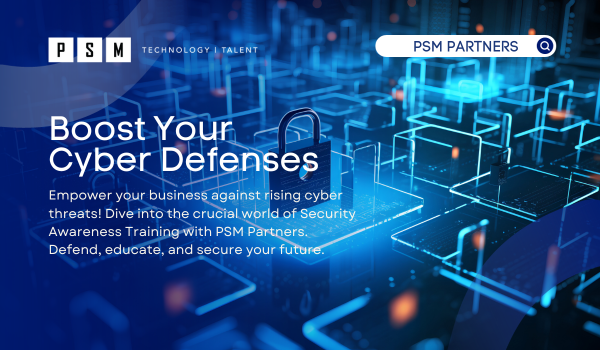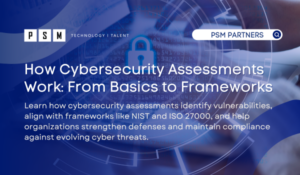Table of Contents
ToggleIs your company confident in its immunity against cyber-attacks? According to research conducted by Check Point, global weekly cyberattacks experienced a 7% rise in Q1 2023 compared to the corresponding quarter of the previous year. This data underscores the critical significance of cybersecurity, emphasizing the constant presence of hacking attempts and other malicious activities. In the face of this ever-evolving threat landscape, security awareness training plays a pivotal role in safeguarding businesses and individuals from cyber threats. It gives employees and individuals the skills necessary to recognize, respond to, and mitigate security risks. It is concerning that only about 29% of people in businesses surveyed indicated that their company offered security training on an annual basis. To address this, it is imperative for companies to prioritize regular security awareness training to ensure that their workforce is well-prepared to defend against the growing tide of cyber threats. Security awareness training is not just a responsibility; it’s an investment in the future security of the company. By promoting a security-conscious workforce, businesses can effectively strengthen their overall cybersecurity posture.
The Vital Role of Security Awareness Training for Businesses
Security awareness training is a proactive strategy utilized by Information Technology (IT) experts to educate individuals on recognizing and preventing cyber threats. By imparting knowledge and skills to employees and other individuals within the company, security awareness training equips them to recognize and respond effectively to various cyber threats. Identifying prevalent cyber threats such as malware, social engineering, and denial of service (DoS) attacks is essential for safeguarding your company against potential cyber-attacks in the future. Awareness of these typical threats is crucial to maintaining your company’s security.
According to an IBM report, it revealed that among the surveyed 57% of those companies who had prior breach experiences were more disposed to pass on the incident costs to consumers. That is why when developing an effective security awareness training program, it should include providing a comprehensive overview of relevant corporate policies and procedures that outline secure work practices and the appropriate contacts in case of potential threats.
Key Components of an Effective Security Awareness Training Program
Given the dynamic nature of today’s technology-driven world, it is widely recognized that cybersecurity training needs to skillfully accommodate various learning styles and roles using a variety of effective approaches. The following are key components to incorporate into your comprehensive training program:
- Computer-based awareness training
Online cybersecurity training accommodates different learning preferences by offering content in various formats, like audio and quizzes. Its flexibility allows for quick integration of new modules in response to emerging threats, ensuring the content remains relevant and individuals are well-prepared for the changing cybersecurity landscape.
- Exercises simulating cyber attacks
Conducting real-world simulations of phishing emails and social engineering tactics refines users’ abilities to detect and respond to cyber threats, offering practical experience in mitigating risks. This proactive approach evaluates the effectiveness of cybersecurity training, preparing individuals for evolving cybercriminal tactics and fostering heightened vigilance.
- Cybersecurity Awareness Campaigns
Visual aids, such as posters and videos, are crucial for shaping cybersecurity behavior. Their simplicity effectively conveys complex information, promoting quicker comprehension and enhancing retention. By integrating visuals into educational materials, a more engaging and accessible learning experience is created, encouraging a proactive approach to cybersecurity awareness and best practices.
- Regular Content Updates
In the rapidly evolving cybersecurity landscape, regular updates to training programs are crucial. The dynamic nature of cyber threats, advancements in technology, changing compliance requirements, and evolving user behaviors necessitate a continuous review and adaptation of program content. By staying current, companies ensure that their cybersecurity teams are equipped with the latest knowledge and tools to effectively identify and mitigate emerging risks.
Essential Security Awareness Training Topics You Need to Cover
In the training curriculum, it’s essential to address subjects related to cyberattacks to ensure users are well-informed about prevalent security threats. The following key areas should be included in your security awareness training:
- Social Engineering
Phishing stands out as the prevailing form of social engineering attacks. Per the FBI, phishing schemes topped the list with 300,497 complaints. The high number of phishing complaints highlights the urgent need for companies to prioritize defense against such threats. Regularly conducting simulated phishing attacks is a proactive and effective strategy. These simulations, mimicking real-world scenarios, expose individuals to cybercriminal tactics, fostering heightened awareness and the ability to recognize and respond to phishing attempts.
- Malware
In 2023, a report revealed that more than 72% of global businesses experienced the impact of ransomware attacks. Providing education on viruses and spyware becomes crucial to empower individuals in recognizing, avoiding, reporting, and protecting against such threats. Hence, it is imperative to train individuals to understand various types of malware.
- Browsing Securely
A report emphasizes that incidents involving sensitive data, such as user IDs, were found in 84% of attacked web applications. Thus, it is essential to educate individuals about secure browsing practices and provide guidance on avoiding tracking or exercising caution when using form auto-filling features.
- Device Security
Educating individuals about securing their devices is crucial, including practices like locking them when not in use to prevent unauthorized access by malicious actors. Additionally, incorporating Multi-factor Authentication (MFA) is recommended, as it serves as a strong security measure, adding an extra layer of defense beyond passwords.
- Incident Response
In case of a cyberattack, it is crucial to have a strategy in place that can swiftly minimize damage and proactively avert future incidents. Creating a communication plan, documenting roles, responsibilities, and procedures, and assembling individuals within your organization to form an Incident Response Team (IRT) are essential steps in quickly restoring your network.
Enhance Your Cyber Resilience with PSM Partners
At PSM Partners, we specialize in cybersecurity services tailored for businesses and institutions. Choose from our cybersecurity managed services for comprehensive IT system management, including monitoring, maintenance, and updates. Alternatively, opt for our Security as a Service (SECaaS) option, focusing solely on securing your system. Our expert cybersecurity professionals will design a robust strategy using advanced technologies to safeguard your IT infrastructure from malware and other threats. Contact us today at (312) 940-7830 to learn more.
Related Insights
What is an SOC Audit?
If your organization handles sensitive data or provides services to...
Read MoreHow Cybersecurity Assessments Work: From Basics to Frameworks
Cybersecurity threats are becoming more sophisticated and widespread, putting sensitive...
Read MoreFuture-Proof Your Technology: Why You Should Consider a Computer Upgrade Every 3 Years
Key Takeaways Three-Year Upgrade Cycle Is Ideal Upgrading business computers...
Read MoreRecovery Time Objective (RTO) vs Recovery Point Objective (RPO): What’s the Difference and Why It Matters for Your Business
Key Takeaways RTO Explained RTO (Recovery Time Objective) is how...
Read MoreAbout the Author

Taylor Friend
I'm a goal-oriented Strategic Alliance Manager who is enthusiastic about building and nurturing collaborative relationships that drive business success. My commitment lies in establishing, overseeing, and expanding partnerships that generate greater business opportunities and foster revenue growth for all stakeholders.





